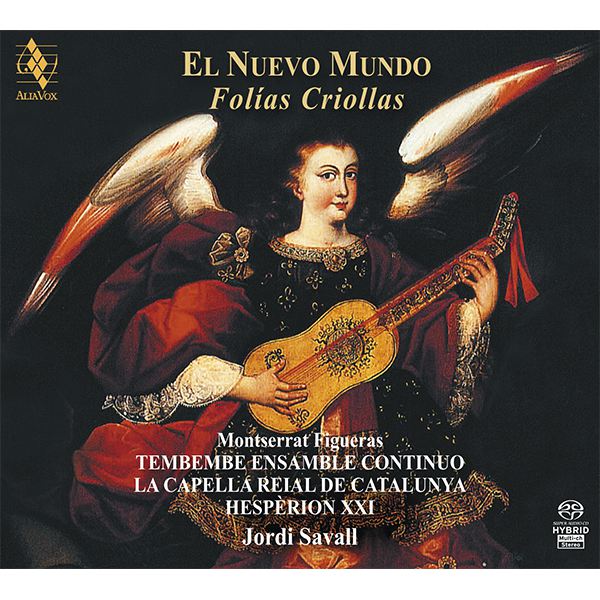EL NUEVO MUNDO
Folías Criollas
Hespèrion XXI, Jordi Savall, La Capella Reial de Catalunya
17,99€
Referència: AVSA9876
- Montserrat Figueras
- TEMBEMBE ENSAMBLE CONTINUO
- LA CAPELLA REIAL DE CATALUNYA
- HESPÈRION XXI
- Jordi Savall
“Canta como una calandria, danza como el pensamiento, baila como una perdida”
“She sings like a lark, dances like thought, and capers like a wild thing.”
Miguel de Cervantes; Don Quixote (Part 2, Ch. XLVIII)
“To the good life, the good life,
This old lady is the Chacona.
From the Indies to Seville
She has come by packet boat.”
Lope de Vega, El amante agradecido (The grateful lover) (Act II)
Like the Chacona, described as an “American mulatto” by Miguel de Cervantes (La Ilustre Fregona), the great majority of musical forms which evolved after the “discovery” and the conquest of the New World retain that extraordinary mixture of Hispanic and Creole elements influenced by indigenous and African traditions. Following on from our earlier project Villancicos y Danzas Criollas; De la Iberia antigua al Nuevo Mundo, this new selection of “Sones y Folías Criollas” for singing and dancing has been recorded in conjunction with Montserrat Figueras and the instrumentalists and vocalists of La Capella Reial de Catalunya and Hespèrion XXI, as well as a number of guest musicians from Argentina, Venezuela, Colombia and Mexico, including Tembembe Ensamble Continuo.
We discovered the existence of Tembembe Ensamble Continuo at the end of 2007, during our preparation and discussions about the choice of music for the film El Baile de San Juan with the director Francisco Athié. We were impressed by their performance, and when a few months later we received an invitation to appear at the Festival Cervantino as part of a joint project between Catalonia and Mexico, we proposed working together on a programme of sones and dances from The Route of the New World. We presented the project in Guanajuato (18 October, 2008), Barcelona (7 January 2009) and Fontfroide (1 August 2009), where we finally recorded most of the tracks on this album, which was completed at the Collegiate Church of Cardona in January, 2010.
+ information in the CD booklet
JORDI SAVALL
San Francisco, 17 March, 2010
Translated by Jacqueline Minett







Share